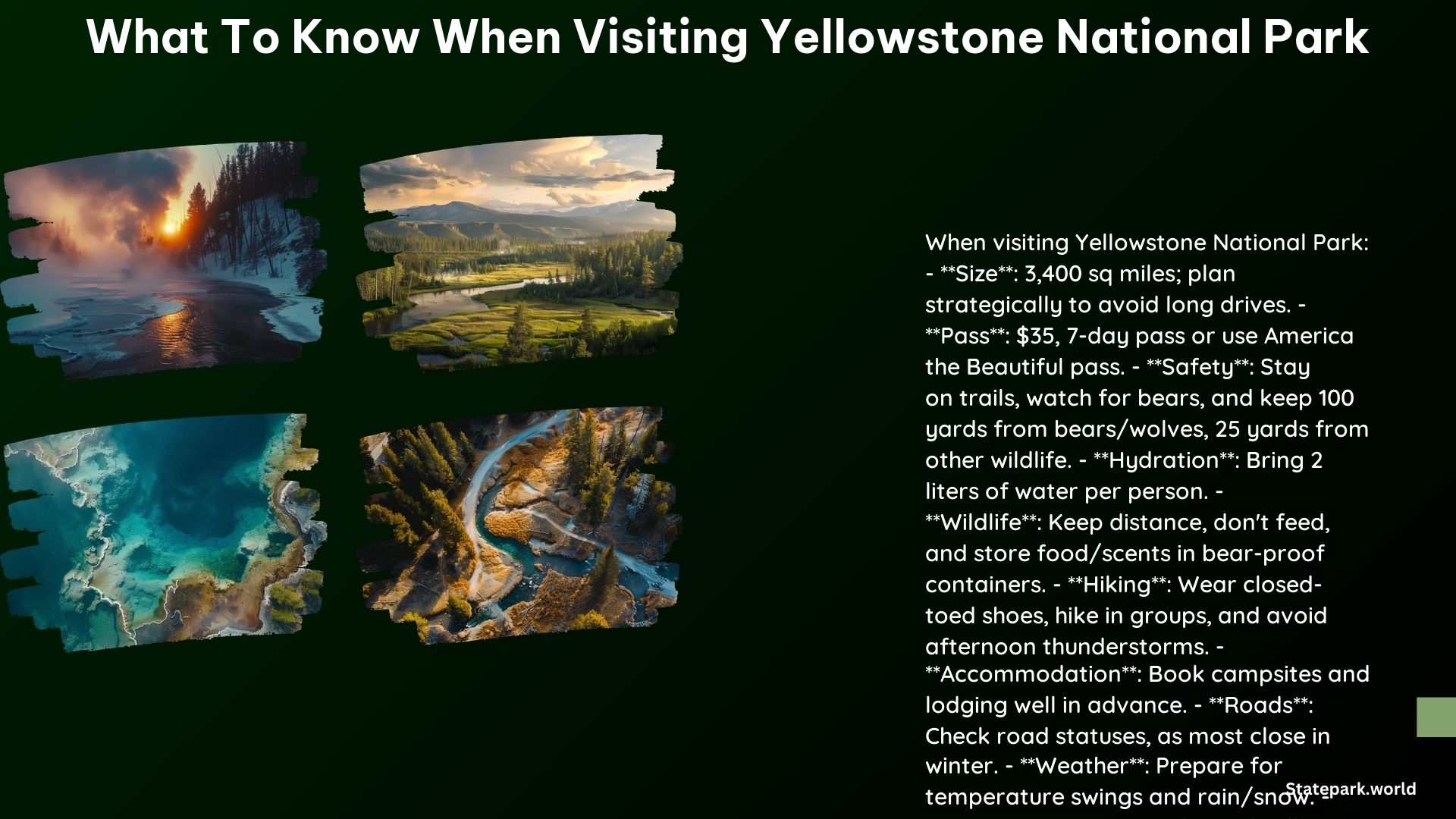When visiting Yellowstone National Park, there are several essential things to know to ensure a safe and enjoyable trip. From the park’s massive size and unpredictable weather to the importance of wildlife awareness and insider tips, this guide will help you make the most of your Yellowstone adventure.
Planning and Preparation
-
Size and Distance: Yellowstone is a vast national park, covering over 3,400 square miles. It’s crucial to plan your trip strategically to avoid spending too much time driving between attractions.
-
Entrance Pass: You’ll need to purchase a $35, 7-day pass at a park entrance station or use your America the Beautiful or other interagency annual pass.
-
Accommodation: Book campsites and lodging well in advance, especially during the peak season from June to August.
-
Weather: Be prepared for unpredictable weather, including rain, snow, and temperature swings. Bring layers, rain gear, and warm clothing to stay comfortable throughout your visit.
Safety and Wildlife

-
Thermal Features: Stay on designated trails and boardwalks, and never enter geysers, hot springs, or other thermal features. These can be fatally hot.
-
Bear Awareness: Carry bear spray, hike in groups, and make noise to avoid surprising bears. Store all food and scented items in bear-proof containers.
-
Wildlife Distance: Maintain a minimum distance of 25 yards from all wildlife and 100 yards from bears and wolves.
-
Hiking: Hike in the morning to avoid afternoon thunderstorms and lightning. Turn back immediately if you hear thunder or see dark clouds.
Insider Tips
-
Visit in Shoulder Season: Consider visiting Yellowstone in September or May to avoid crowds and enjoy better weather.
-
Early Morning or Evening Visits: Visit popular attractions like Old Faithful and Yellowstone Lake during the early morning or evening to avoid crowds.
-
Hike Beyond the Roads: Explore the park’s many trails to experience its full beauty and variety beyond the main roads.
-
Use Park Resources: Visit visitor centers for information on wildlife sightings, geyser eruption times, and other valuable insights to maximize your time in the park.
Packing Essentials
-
Water: Bring at least two liters of water per person to stay hydrated.
-
Closed-Toed Shoes: Wear hiking boots or tennis shoes with good tread to protect your feet on trails.
-
Bear Spray: Carry bear spray and know how to use it.
-
Reusable Water Bottle: Refill your reusable water bottle at park filling stations to reduce waste.
Additional Tips
-
Download the National Park Service App: Get offline content and enhance your Yellowstone experience.
-
Expect Limited Connectivity: Be prepared for limited cell reception and internet access.
-
Attend Ranger Programs: Participate in ranger-led programs to learn more about the park’s history, geology, and wildlife.
By following these guidelines, you can ensure a safe, enjoyable, and memorable trip to Yellowstone National Park.
References:
– Yellowstonepark.com. (2024). Yellowstone Essentials: 12 Basic Things You Need to Know. Retrieved from https://www.yellowstonepark.com/park/faqs/yellowstone-basic-information/
– NPS.gov. (2023). Top 10 things to know about visiting Yellowstone National Park. Retrieved from https://www.nps.gov/yell/learn/news/23017.htm
– Yellowstonenationalparklodges.com. (2023). 10 Insider Tips for Visiting Yellowstone. Retrieved from https://www.yellowstonenationalparklodges.com/connect/yellowstone-hot-spot/10-insider-tips-for-visiting-yellowstone/
– Lonelyplanet.com. (2023). 10 things you should know before visiting Yellowstone National Park. Retrieved from https://www.lonelyplanet.com/articles/things-to-know-before-traveling-to-yellowstone-national-park
